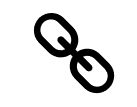I’ve decided to examine Clarrisa’s What’s in Your Bag task. 
https://blogs.ubc.ca/etec54064aguevara/2021/09/16/task-1-whats-in-your-bag/
The first element on her page that caught my eye was that she used a video to describe and showcase the contents of her bag. The video is an apt medium for this task because it pays homage to the YouTube trend of “what’s in my bag” videos which Clarissa acknowledges. Not only is a video a multimodal and interactive format but it also made her introduction feel personable.
Placing the video at the top, with the text connected to readings after, seems effective as it allows the reader to become familiar with the items in the bag before delving into the reflection. In hindsight, this is what I should have done with my interactive picture.
Before I had stream-lined my contents to a bare minimum, my bag resembled Clarissa’s with extra cables and chargers, and wallet with gift and rewards cards galore. Both our bags contain print as well as digital-based literacies. They are purposeful and depict that we like to be prepared. However, I do not think that the items in my bag provide a glimpse into my personality or give specific insight to my profession because I realized I had been sparse with my descriptions too. On the contrary, the contents of Clarissa’s bag are tied to her personality as well as her identity as a teacher and a student. She describes her many pens for example as the several ways she crafts within her skillset. I appreciated how she was able to connect the tools in her bag to the etymological work of Scholes (1992) and the common theme of creation within roots of text and technology.
When going through her webpage, I was charmed by her theme and use of visuals that appeared uniquely stylized for each task.The organization of her posts resemble thumbnails on a Pinterest board, making it both straightforward and intriguing to explore and provide a more enjoyable user experience.
Reference
Scholes, R. (1992). Canonicity and Textuality. Introduction to Scholarship in Modern Languages and Literature, 2nd edition, 138–158.